In a world where urbanization is rapidly advancing and the demand for sustainable food solutions is increasing, urban agriculture is the key to a greener and healthier future. Growing food in urban areas not only improves access to fresh produce but also reduces the ecological footprint. This article explores the fundamentals, benefits, and challenges of urban agriculture, presents innovative approaches, and offers a glimpse into the future of this growing trend.
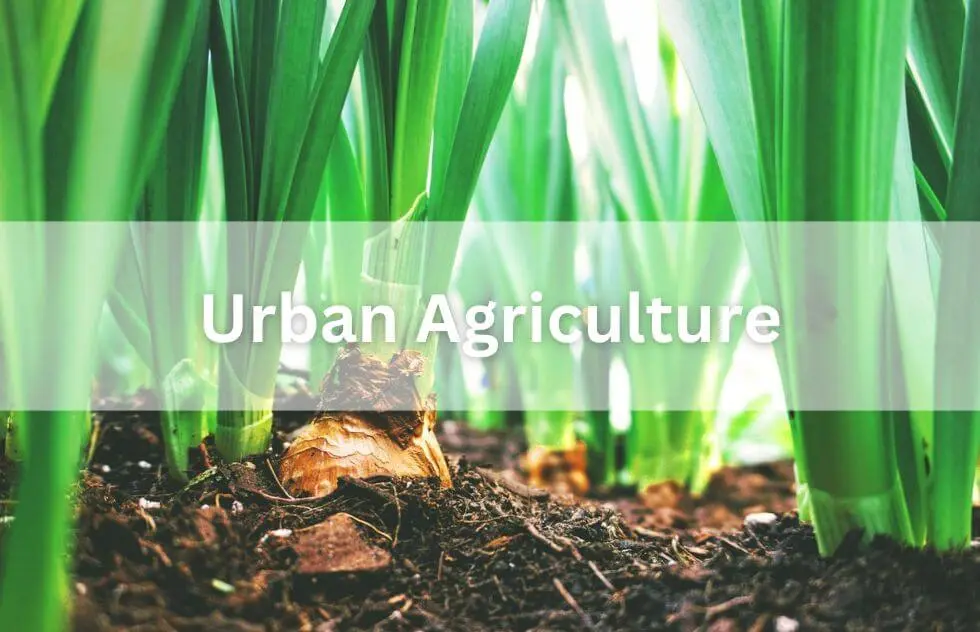
Urban Agriculture: What Is It?
Urban agriculture is more than just a trend; it is a transformative movement with the potential to revolutionize the way we produce and consume food. Amidst the skyscrapers and dense traffic of cities, green oases are emerging, providing not only fresh food but also strengthening the social and ecological fabric of urban communities.
Definition and Core Principles
Urban agriculture refers to the cultivation, processing, and distribution of food in urban areas. Unlike traditional agriculture, which relies on large rural spaces, urban agriculture employs innovative approaches to maximize the use of limited urban space. Techniques such as vertical farming, rooftop gardens, and hydroponic systems are commonly utilized.
The core principles of urban agriculture include:
- Sustainability: Resource-efficient farming aimed at minimizing water and energy consumption.
- Resource Efficiency: Utilizing vacant lots, rooftops, and indoor spaces to manage land efficiently.
- Community Orientation: Encouraging social interaction and collaboration within neighborhoods.
- Local Production: Reducing transportation distances and costs by growing food locally.
These principles make urban agriculture not only an ecological but also a social and economic innovation.
Distinction from Traditional Agriculture
Urban agriculture differs in many ways from traditional agriculture. While conventional farming is conducted on vast fields outside cities, the urban variant takes place right within the city—often on smaller but optimally utilized spaces.
Another key difference is its reliance on technology. Urban agriculture frequently employs high-tech solutions such as automated irrigation systems, LED lighting technologies, and data-driven cultivation strategies. In contrast, traditional agriculture is more dependent on natural cycles, such as weather and seasonal changes.
A specific example is resource usage. Traditional farming often requires large amounts of water and fertilizers, whereas urban agriculture uses systems like hydroponics or aquaponics, which drastically reduce water consumption and recycle waste.
History and Origins
The concept of urban agriculture is not new. As far back as antiquity, people grew food in cities to ensure their supply. In Mesopotamia, the “Cradle of Civilization“, people created gardens to produce fresh food close to their homes. Similarly, the Romans utilized their villae urbanae—urban estates—for cultivating olives, wine, and grains.
Over the centuries, urban agriculture evolved, particularly in times of crisis. During World War II, “Victory Gardens” were established in the United States and Europe to secure food supplies. Millions of urban residents grew fruits and vegetables in backyards, on rooftops, and in public parks.
In recent decades, urban agriculture has experienced a renaissance. With increasing urbanization and the growing challenges of climate change, cities are looking for ways to make their food supply more sustainable and independent. Projects such as vertical farms in Singapore or community gardens in Berlin demonstrate how this centuries-old practice can be adapted to meet the needs of the modern world.
Urban Agriculture Today
Urban agriculture today is a complex and diverse system supported by individuals, businesses, and municipalities. It ranges from small balcony gardens to state-of-the-art indoor farms producing food across multiple floors. Its versatility and adaptability make it a crucial solution to many challenges of modern urban development, from food security to the promotion of community projects.
With its blend of tradition, innovation, and community, urban agriculture offers an exciting outlook for a more sustainable and livable future.
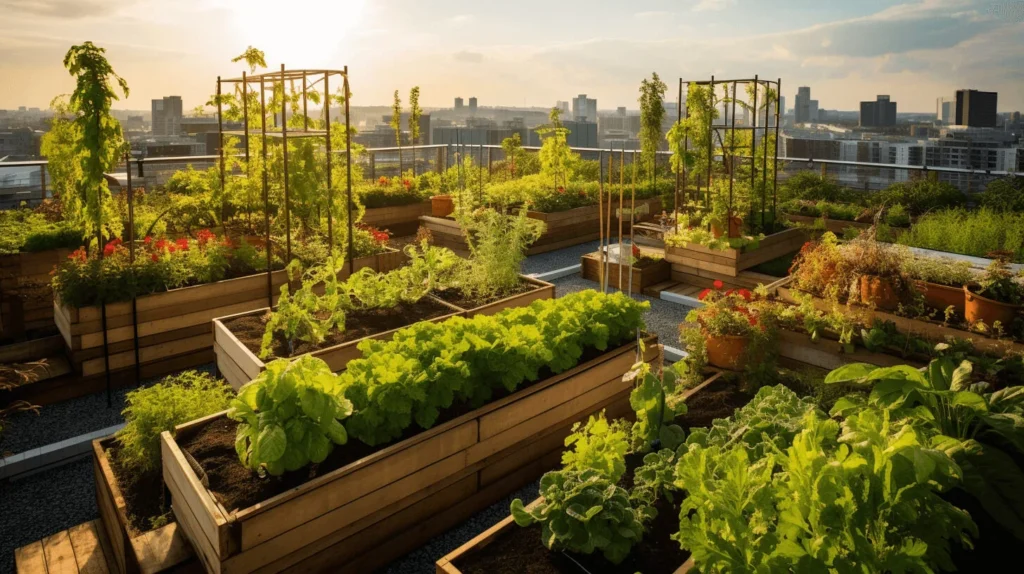
Why Is Urban Agriculture Important?
Urban agriculture has emerged in recent years as a key response to numerous social, economic, and environmental challenges. In the face of rapid urbanization, climate change, and increasing food insecurity in urban areas, it is more than just a concept—it is a necessity. From environmental benefits to social transformation, the significance of urban agriculture extends far beyond food production.
Environmental Benefits
Reduction of the Carbon Footprint
One of the greatest environmental advantages of urban agriculture is the shortening of supply chains. Food grown in cities does not need to travel thousands of kilometers to reach consumers. This reduces emissions from transportation as well as energy consumption for storage and refrigeration.
Efficient Resource Utilization
Modern cultivation methods such as hydroponics and aquaponics minimize water consumption and enable the reuse of waste materials. For example, in aquaponic systems, nutrients from fish farming are recycled to fertilize plants.
Improved Air Quality and Temperature Regulation
Urban green spaces, such as rooftop gardens or vertical farms, contribute to better air quality by absorbing CO₂ and releasing oxygen. They also act as natural air conditioners, cooling urban heat islands and enhancing the energy efficiency of buildings.
Addressing Food Insecurity
Food insecurity is a growing problem in many urban areas, particularly in low-income neighborhoods where access to fresh and nutritious food is limited. Urban agriculture can help bridge these supply gaps.
Local Production and Availability
Local food production reduces dependence on external supply chains. Crises such as the COVID-19 pandemic have highlighted the vulnerabilities of global supply chains. Urban agriculture offers a resilient alternative.
Affordability
Community gardens and urban farms enable residents to access fresh fruits and vegetables at affordable prices or even for free. This is especially crucial in “food deserts,” neighborhoods with limited access to fresh food.
Promoting Biodiversity
Cities are often dominated by concrete and asphalt, which significantly limit habitats for animals and plants. Urban agriculture creates new, diverse habitats.
Habitat for Pollinators and Other Animals
Flowering plants in urban gardens attract bees, butterflies, and other pollinators that are essential for ecological health. At the same time, they can provide nesting sites for birds and habitats for insects.
Preservation of Rare Plant Species
Urban agriculture also enables the cultivation and preservation of rare or endangered plant species that might not survive in natural habitats.
Supporting Ecological Balance
Integrating agriculture into urban ecosystems can help improve soil quality and prevent erosion while contributing to the restoration of natural cycles.
Social Cohesion and Education
Urban agriculture offers not only ecological and economic benefits but also profound social impacts. It strengthens communities and imparts valuable skills.
Promoting a Sense of Community
Community gardens provide neighborhoods with gathering spaces where people from diverse backgrounds can come together. Working collaboratively on projects strengthens social cohesion and fosters a sense of belonging.
Education and Awareness
Many urban agriculture projects offer educational programs for children and adults. Participants learn how to grow food, live sustainably, and make environmentally conscious decisions. This not only supports personal development but also raises awareness of the importance of environmental protection and food security.
Health Benefits
Working outdoors and connecting with nature promote physical and mental well-being. Fresh air, physical activity, and the joy of gardening contribute to improved quality of life.
Economic Benefits
In addition to its social and environmental aspects, urban agriculture also plays a significant role in the local economy.
Job Creation
Urban agriculture projects create jobs in food production, processing, and marketing. This is particularly important in cities with high unemployment rates.
Strengthening the Local Economy
By selling locally grown products, urban communities directly benefit from the revenue. Restaurants and markets that collaborate with urban farms support a sustainable and regional value chain.
Summary: A Holistic Approach
The significance of urban agriculture lies in its versatility. It is not only a means of food production but also a tool for addressing ecological, social, and economic challenges. With its numerous benefits, it is a key component for the sustainable development of modern cities. Urban agriculture is much more than just harvesting fresh vegetables—it is a step toward a sustainable and future-ready society.

Forms and Approaches of Urban Agriculture
Urban agriculture encompasses a wide range of approaches and methods tailored to the diverse needs and conditions of urban environments. From community-oriented projects to high-tech solutions, the forms of urban agriculture are as varied as the cities themselves. Each method has its specific strengths and applications, designed to optimize the use of limited resources and spaces.
Vertical Farming and Indoor Agriculture
Vertical Farming
Vertical farming is one of the most innovative forms of urban agriculture. It involves growing plants on vertical levels within buildings, often using artificial lighting and controlled environments. This method maximizes the use of available space and is ideal for urban areas with limited land.
Benefits of Vertical Farming:
- High productivity in a small footprint.
- Year-round production, independent of weather conditions.
- Reduced water consumption through closed-loop systems.
One example is the globally renowned company AeroFarms, which grows lettuce and herbs on multiple levels inside repurposed warehouses.
Indoor Farming
Indoor farming refers to the cultivation of plants in fully enclosed spaces, such as repurposed factories, basements, or containers. This method uses LED lighting to simulate sunlight and computer-controlled systems to regulate temperature, humidity, and nutrient delivery.
A key advantage of indoor farming is that it does not compete with other land uses, such as residential or commercial development. Additionally, indoor farms can be located directly in city centers, further reducing transportation costs.
Community Gardens and Urban Farms
Community Gardens
Community gardens are small, often neighborhood-initiated projects where multiple people collaboratively grow food on shared land. These gardens promote social cohesion and provide residents—especially in densely populated areas—with the opportunity to produce fresh fruits and vegetables.
Characteristics of Community Gardens:
- Shared responsibility and maintenance of the spaces.
- Often combined with educational programs and workshops.
- Promotion of environmental awareness among the community.
A well-known example is the Prinzessinnengarten in Berlin, which has become a hub for sustainable urban development and community building.
Urban Farms
Urban farms are larger projects, often operated commercially. They supply local markets, restaurants, or even supermarkets with fresh produce. These farms are typically professionally managed and utilize modern technologies to maximize productivity.
An impressive example is the Brooklyn Grange Farm in New York, a rooftop farm that produces tons of fresh vegetables annually while also offering educational programs and hosting events.
Hydroponics and Aquaponics
Hydroponics
Hydroponics is a soilless cultivation method where plants grow in a water-based nutrient system. This method is particularly well-suited for urban environments as it is space-saving and resource-efficient.
Advantages of Hydroponics:
- Up to 90% less water usage compared to traditional agriculture.
- No need for fertile soil.
- Controlled nutrient levels lead to higher yields.
Hydroponic systems are often used in vertical or indoor farms, enabling the cultivation of lettuce, herbs, and other fast-growing plants.
Aquaponics
Aquaponics combines hydroponics with fish farming. In this closed-loop system, fish waste provides nutrients for the plants, while the plants purify the water, which is then recirculated back to the fish.
Advantages of Aquaponics:
- Simultaneous production of fish and plants.
- Sustainable use of water and nutrients.
- Ideal for urban areas where space and resources are limited.
Examples of successful aquaponics projects can be found in cities like Chicago and Rotterdam, where they are used for both food production and environmental education.
Rooftop Gardens and Green Facades
Rooftop Gardens
Rooftop gardens are one of the most common forms of urban agriculture, transforming unused rooftop spaces into green oases. They provide space for growing food and offer ecological and climatic benefits.
Benefits of Rooftop Gardens:
- Improve the energy efficiency of buildings through insulation.
- Reduce rainwater runoff and enhance air quality.
- Create recreational spaces in urban areas.
A prime example is the Freiheit EINS Farm in Basel, one of Europe’s largest rooftop farms, which produces fresh vegetables for the local community.
Green Facades
Green facades involve the cultivation of plants along the exterior walls of buildings. This method offers a space-efficient way to integrate greenery into urban areas while enhancing the aesthetic and ecological quality of buildings.
Benefits of Green Facades:
- Reduce urban heat island effects.
- Improve the energy efficiency of buildings.
- Create a more pleasant microclimate.
A notable example is the Bosco Verticale in Milan, a vertical forest that provides habitat for thousands of plants while improving air quality in its surroundings.
Mobile Gardens and Modular Systems
Mobile Gardens
Mobile gardens are flexible agricultural projects where plants are grown in movable containers or beds. They are ideal for temporary locations or spaces not available for long-term use.
A well-known example is the Nomadic Garden in Berlin, where plants are cultivated in mobile containers to green urban environments.
Modular Systems
Modular systems consist of prefabricated components that can be flexibly combined to adapt to different spaces and needs. These systems are particularly popular in cities due to their quick and easy implementation.
Summary: Diversity and Adaptability
The variety of forms and approaches makes urban agriculture a versatile and adaptable solution to urban challenges. From high-tech indoor farms to community gardens, these approaches offer a wide range of possibilities to improve food security, strengthen social connections, and make cities more ecologically sustainable. Each of these methods can be implemented individually or in combination to meet the specific needs and resources of a city.
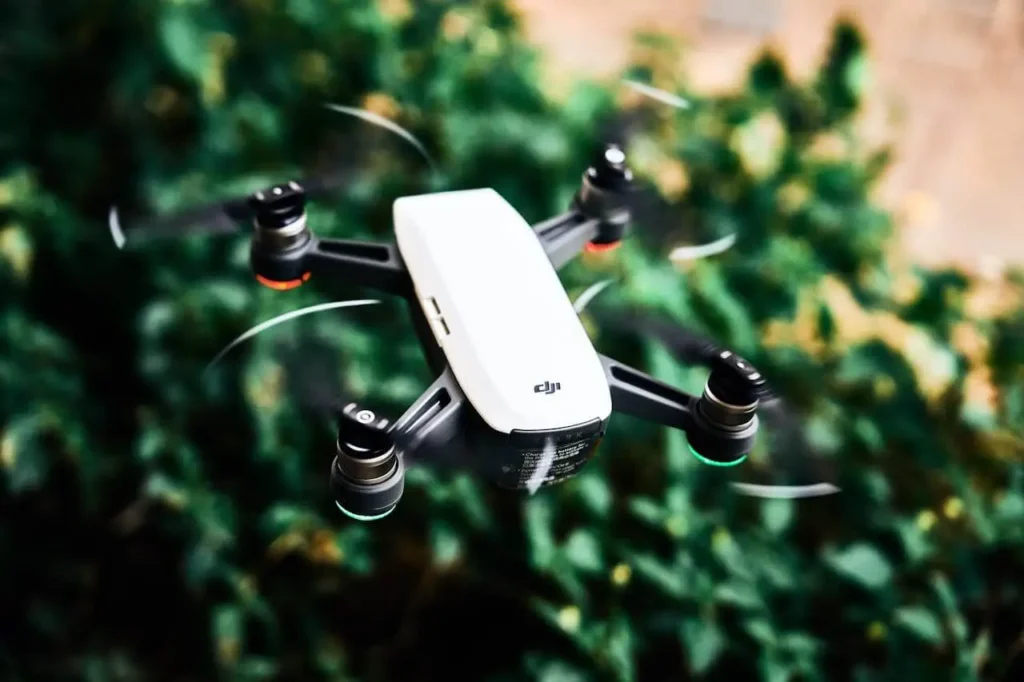
Technological Innovations in Urban Agriculture
Technology plays a key role in the development of urban agriculture. Modern innovations enable more efficient, sustainable, and productive food cultivation, even in the densest urban areas. These technologies are transforming urban agriculture from traditional farming methods into high-tech solutions that address challenges such as space limitations, resource scarcity, and environmental pressures.
Smart Farming: Precision with IoT and Automation
The Internet of Things (IoT)
The Internet of Things has revolutionized urban agriculture by automating and monitoring the cultivation process. Using connected sensors, farmers can monitor parameters such as temperature, humidity, light intensity, and nutrient levels in real-time. This data enables precise control of growth conditions, minimizing resource consumption and maximizing productivity.
Examples of IoT Applications:
- Soil sensors measure moisture and nutrient levels to optimize water usage.
- Climate sensors in indoor farms monitor temperature and CO₂ levels to create ideal growth conditions.
- Irrigation systems automatically adjust to plant needs, preventing overwatering.
Automation and Robotics
Automation and robotics have significantly increased the efficiency of urban agriculture. Robots can handle tasks such as plant care, harvesting, and sorting, reducing labor costs and ensuring consistent quality.
An example is the use of harvesting robots specifically designed for delicate crops like tomatoes or lettuce. These robots are equipped with cameras and artificial intelligence to identify ripe fruits and harvest them selectively.
Artificial Intelligence (AI) and Big Data
Artificial Intelligence (AI)
AI systems analyze large datasets to identify patterns and trends. These insights help optimize cultivation processes and increase harvest yields. In urban agriculture, AI can:
- Determine the optimal timing for planting and harvesting.
- Detect diseases or pests early and suggest targeted countermeasures.
- Develop efficient cultivation plans to maximize the use of space and resources.
An example of AI in use is the platform Prospera, which analyzes data from sensors and cameras to provide farmers with real-time decision-making support.
Big Data
The analysis of large datasets, known as Big Data, enables strategic planning in urban agriculture. By using data on weather, market trends, and consumer habits, urban farms can adjust their production to avoid overproduction and better meet demand.
A practical example is the use of weather data to adjust the lighting and irrigation in indoor farms, thereby reducing energy consumption.
Advances in Plant Science
Optimization of Plant Varieties
Urban agriculture requires plants that can grow in limited spaces and under controlled conditions. Advances in plant science have led to the development of varieties specifically bred for vertical and indoor farms. These plants are:
- More resistant to diseases and pests.
- More efficient in nutrient use.
- Higher yielding, even in small spaces.
An example is the breeding of dwarf varieties of tomatoes and peppers, which thrive particularly well in hydroponic systems.
Microalgae and Alternative Crops
Another advancement is the cultivation of microalgae, which require little space and have high nutrient density. Microalgae are increasingly used in urban agriculture as a source of proteins, vitamins, and dietary supplements.
Lighting Technology: LED and Spectrum Control
LED Lighting
LED technology has revolutionized urban agriculture, particularly indoor and vertical farming. LEDs are energy-efficient and allow control over light intensity and spectrum to optimize plant growth.
Spectrum Control
Different light wavelengths affect plant growth in various ways. For instance, red light promotes flowering, while blue light supports leaf growth. Modern LED systems can adjust the light spectrum to meet the specific needs of plants, resulting in higher yields and shorter growth cycles.
An innovative example is the company Plenty, which uses LED lighting to minimize energy consumption while producing high-quality crops.
Advances in Hydroponic and Aquaponic Systems
Hydroponics
New technologies have further enhanced the efficiency of hydroponic systems. Today, closed-loop systems virtually eliminate water loss while delivering maximum yields. Automated dosing systems ensure that plants receive precisely the right amount of nutrients.
Aquaponics
Modern aquaponic systems integrate sensors and AI to optimize the nutrient cycle between fish and plants. This reduces labor requirements and ensures consistent water quality.
Urban Farming Apps and Digital Platforms
Apps for Urban Farmers
Digitalization has made it easier for farmers to manage and optimize their processes. Apps offer features such as:
- Harvest planning and forecasting.
- Real-time monitoring of growing conditions.
- Communication with local markets and consumers.
An example is the FarmLogs application, designed specifically for managing small agricultural operations. It combines data analysis, weather forecasting, and harvest planning into a single platform.
Summary: The Future of Urban Agriculture
Technological innovations are key to sustainable urban agriculture. They enable the production of high-quality food despite limited space and resources. These technologies not only enhance efficiency but also help make cities more resilient, sustainable, and livable. From IoT and AI to advanced lighting systems and genetically optimized plants, urban agriculture exemplifies the fusion of technology and sustainability.
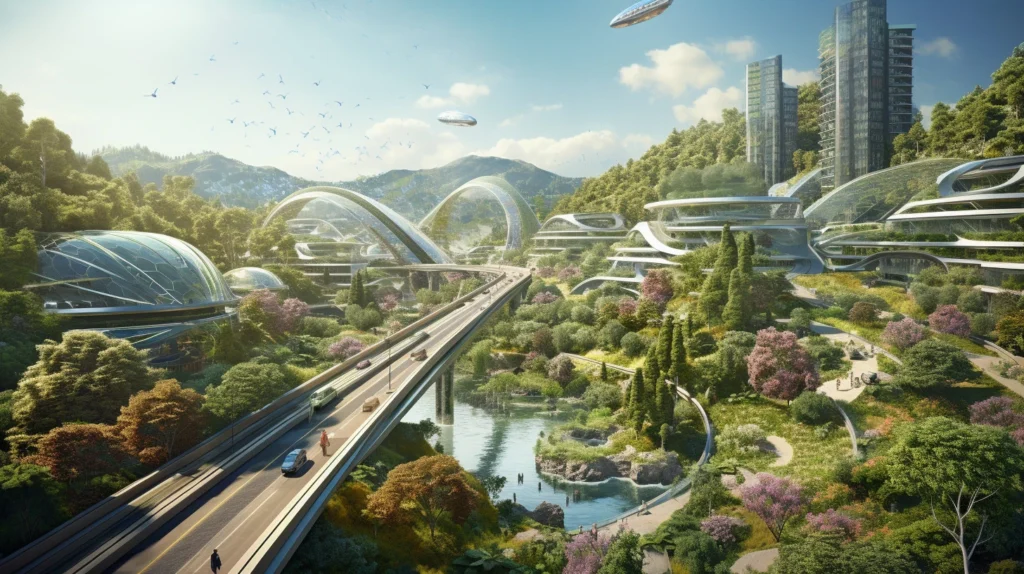
Challenges and Solutions
While urban agriculture offers numerous benefits, it also faces several challenges. These obstacles often stem from the urban environment, characterized by limited space, high costs, and regulatory barriers. However, many innovative approaches and technologies are being developed to overcome these issues. This section highlights the key challenges of urban agriculture and the most promising solutions.
Limited Space and High Real Estate Prices
Challenge
The lack of available land in cities is one of the biggest obstacles to urban agriculture. Land suitable for agricultural use often competes with residential, commercial, or infrastructure projects. Additionally, high property prices make securing larger areas for food cultivation difficult.
Solutions
- Vertical Farming: Growing crops on multiple levels maximizes the use of available space. Vertical farms can be housed in high-rise buildings, vacant warehouses, or purpose-built structures.
- Utilization of Rooftops: Rooftop gardens transform unused spaces into productive growing areas. They not only provide space for crops but also improve the energy efficiency and microclimate of buildings.
- Mobile Growing Systems: Modular and mobile gardens based on temporary spaces or containers offer a flexible solution to address space limitations.
- Temporary Use of Vacant Lots: Interim projects on vacant land utilize unused urban spaces before they are repurposed for other developments.
Energy and Water Requirements
Challenge
Operating indoor farms and hydroponic systems requires significant amounts of energy, particularly for lighting, ventilation, and pumping. While water demand in closed systems is lower, it remains a critical factor in water-scarce regions.
Solutions
- Renewable Energy: Integrating solar, wind, or geothermal systems can reduce energy needs and minimize environmental impact.
- Efficient Lighting: Using LED technology and spectrum-adjusted lighting significantly lowers energy consumption.
- Closed Water Systems: Hydroponic and aquaponic systems recycle water, reducing water usage by up to 90% compared to traditional farming methods.
- Rainwater Harvesting: Collecting and using rainwater can decrease reliance on municipal water supplies.
- Smart Farming: Sensors and automated systems precisely monitor water usage, ensuring only the necessary amount of water is consumed.
Legal and Regulatory Barriers
Challenge
Many cities lack clear regulations or support for urban agriculture. Laws designed for traditional farming or commercial operations are often difficult to apply to urban agriculture. Additionally, bureaucratic hurdles such as building permits or land use rights pose significant challenges.
Solutions
- Integration into Urban Planning: Governments can incorporate urban agriculture into city planning strategies and designate specific areas for this purpose.
- Regulatory Adjustments: Tailored legislation that addresses the specific needs of urban agriculture, such as simplified approval processes, can be helpful.
- Subsidies and Incentives: Financial support and tax benefits can promote development. For example, cities could provide grants for rooftop gardens or energy-efficient farms.
- Education and Awareness: Public campaigns and workshops can raise awareness of the benefits of urban agriculture and mobilize political support.
High Initial Investments and Economic Viability
Challenge
Setting up urban farms, particularly vertical or indoor farms, requires significant investments in technology, infrastructure, and operational costs. Ensuring the economic viability of such projects can be challenging in the initial phases.
Solutions
- Crowdfunding and Community Financing: Many urban agriculture projects leverage platforms like Kickstarter or local investment groups to cover initial costs.
- Partnerships with Businesses: Collaborating with local businesses, restaurants, or supermarkets can create a stable revenue stream.
- Diversification of Revenue Streams: In addition to selling produce, urban farms can offer workshops, tours, or event spaces.
- Grants and Subsidies: Governments and foundations increasingly provide financial support for sustainable agriculture projects.
Knowledge and Skill Gaps
Challenge
Urban agriculture requires specific expertise, particularly in modern technologies such as hydroponics, sensors, and data analysis. Many individuals interested in working in this field lack the necessary skills.
Solutions
- Educational Programs: Training and education in areas such as smart farming, sustainable cultivation, and farm management can help bridge skill gaps.
- Partnerships with Universities: Collaborations with educational institutions can foster research and development while providing practitioners with access to knowledge.
- Simplified Technology: Developing user-friendly systems that can be operated without advanced technical knowledge makes it easier for people to enter the field of urban agriculture.
Climatic Conditions and Environmental Stressors
Challenge
Urban environments are often characterized by environmental stressors such as air pollution, heat islands, and limited natural resources. These conditions can make plant cultivation more challenging.
Solutions
- Closed Systems: Indoor farms eliminate the impact of external environmental conditions and create a controlled growth environment.
- Resilient Plants: Cultivating plants specifically bred for urban conditions can improve yields.
- Integration of Green Spaces: Greening facades and rooftops helps mitigate urban heat and improve air quality.
- Recycling and Circular Economy: Reusing organic waste from cities as compost or fertilizer closes the nutrient cycle and reduces waste.
Summary: Innovation and Collaboration as Keys
The challenges of urban agriculture are undoubtedly diverse but not insurmountable. With technological innovation, political support, and societal collaboration, these challenges can be addressed. Urban agriculture has the potential to make cities more sustainable, resilient, and livable—if the right solutions are implemented.
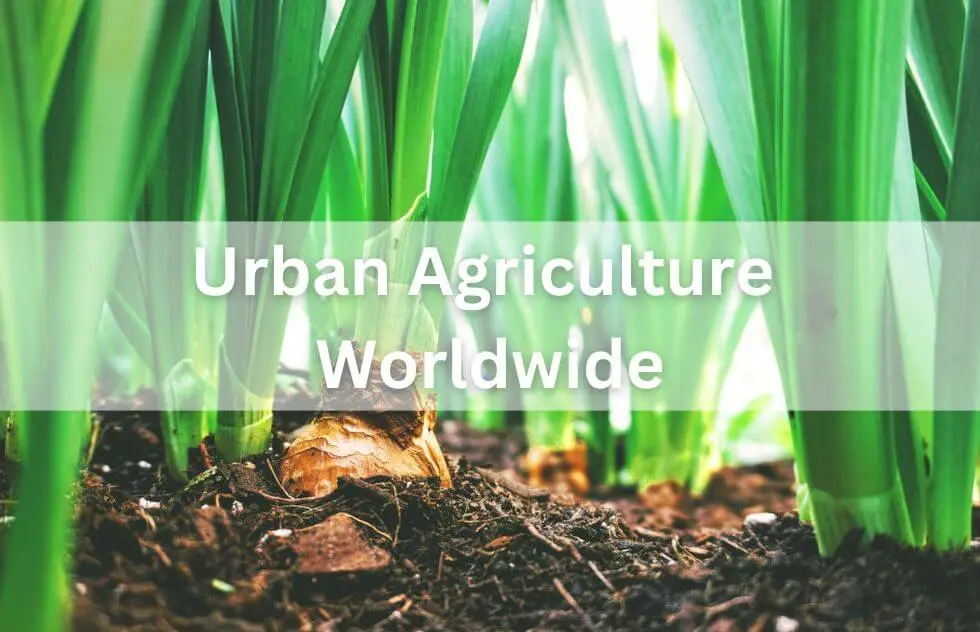
Urban Agriculture Worldwide: Success Stories
Urban agriculture has established itself globally as an innovative solution for food security, sustainability, and urban development. Various cities have developed unique approaches tailored to their specific challenges and resources. These success stories demonstrate how creative solutions can transform urban spaces.
Singapore: Vertical Farming in the Smart Nation
Singapore, a city-state with limited land and a high population density, is a pioneer in urban agriculture. The focus is on advanced, space-efficient methods such as vertical farming and indoor farming.
- Sky Greens: This company operates one of the world’s first vertical farms, where plants are grown on rotating, hydraulically powered towers. These towers maximize available space while minimizing water and energy use. Sky Greens produces fresh vegetables for local markets, reducing the carbon footprint through short transportation distances.
- Government Support: The government promotes agricultural innovation through subsidies and research. Initiatives like the “30-by-30” strategy aim to locally produce 30% of the country’s food needs by 2030.
- Technological Innovations: AI and IoT are used to enhance productivity and optimize cultivation processes.
Singapore demonstrates how technology and political commitment can play a leading role in shaping urban agriculture.
Berlin: Urban Gardens and Social Transformation
Berlin is renowned for its vibrant urban gardening movement, which not only produces food but also serves social and cultural purposes.
- Prinzessinnengarten: This community garden in the heart of Berlin is a model project for sustainability and education. The garden is collectively managed, allowing visitors to grow their own vegetables, attend workshops, and participate in educational programs.
- Tempelhofer Feld: On the grounds of the former Tempelhof Airport, numerous urban gardening projects have emerged. These initiatives promote local food production and strengthen social cohesion.
- Diversity and Inclusion: Berlin’s urban gardens bring together people of different ages, cultures, and backgrounds, fostering a sense of community.
The city illustrates how urban agriculture can break down social barriers and raise awareness of sustainable practices.
Detroit: From the “Rust Belt” to an Agricultural Hub
Detroit, a city once known for its economic decline, has reinvented itself through urban agriculture. Abandoned spaces and vacant land have been transformed into productive agricultural areas, promoting both food security and economic development.
- The Michigan Urban Farming Initiative (MUFI): MUFI has established a community garden in Detroit’s North End neighborhood, providing fresh food to low-income households. The initiative integrates education, community collaboration, and food production.
- Hantz Farms: This project has converted large tracts of vacant land into orchards and fields, aiming to create jobs and improve environmental quality.
- Green Infrastructure: Urban agriculture in Detroit also serves to capture rainwater and reduce urban heat islands.
Detroit is a prime example of how urban agriculture can combat economic decline and revitalize a city.
New York City: High-Tech Solutions in the Metropolis
New York City, one of the most populous metropolises in the world, has established itself as a leader in integrating high-tech solutions into urban agriculture.
- Brooklyn Grange: This rooftop farm is one of the largest in the world, producing over 20 tons of fruits and vegetables annually. In addition to food production, the farm offers educational programs and events, promoting sustainability in the city.
- Gotham Greens: The company operates state-of-the-art rooftop greenhouses in New York and other cities. These greenhouses use hydroponic systems that consume 90% less water than traditional agriculture.
- Urban Future Lab: In collaboration with local universities and start-ups, New York supports the development of new technologies and business models for urban agriculture.
New York demonstrates how urban agriculture can be scaled with high-tech solutions, even in densely populated megacities.
Tokyo: Innovative Mini-Farms
In Tokyo, one of the most densely populated cities in the world, urban agriculture has flourished through the use of small spaces and innovative technologies.
- Pasona Urban Farm: Located in an office building in the heart of Tokyo, Pasona has created an indoor farm where employees grow vegetables, fruits, and herbs. This not only promotes local food production but also enhances employee well-being and productivity.
- Balcony Gardens and Green Facades: Many households and businesses utilize small balconies and building facades to grow food. These mini-farms improve air quality and encourage self-sufficiency.
- Integration into Urban Planning: Tokyo’s urban planning increasingly supports rooftop gardens and community projects.
Tokyo demonstrates how even the smallest spaces can be utilized to integrate sustainable agriculture into a megacity.
Rotterdam: Sustainability and Circular Economy
Rotterdam is renowned for its innovative approaches to urban agriculture, with a focus on sustainability and circular economy principles.
- Floating Farm: This floating farm, the first of its kind worldwide, produces milk directly in Rotterdam’s harbor. Urban waste is used to feed the cows, and water is recycled to minimize environmental impact.
- DakAkker: A rooftop farm in the heart of Rotterdam that not only grows food but also serves as a research center for sustainable agriculture.
- Circular Economy: Many projects in Rotterdam focus on reusing waste, such as turning it into compost or biogas.
Rotterdam demonstrates how urban agriculture can find innovative ways to promote sustainability and a circular economy.
Summary: Inspiration for the World
These global success stories show that urban agriculture is more than just a solution for food production. It is a catalyst for social, economic, and environmental transformation. Each city has developed its own approaches tailored to its specific needs and challenges. Whether technology-driven like in Singapore and New York or community-focused like in Berlin and Detroit, urban agriculture offers countless opportunities to make our cities more sustainable and livable.
The Future of Urban Agriculture
Urban agriculture is at a turning point where technology, sustainability, and societal needs converge. In the face of global challenges such as climate change, urbanization, and food insecurity, it is becoming a central component of the cities of the future. This section explores the trends, visions, and transformative potential of urban agriculture, which extends far beyond mere food production.
Integration into Smart Cities
The cities of the future—Smart Cities—are built on technology, connectivity, and sustainability. Urban agriculture will play a key role in these cities, offering ecological, social, and economic benefits.
- Food Production as a City Function: Urban agriculture will be integrated into the basic infrastructure of cities. Edible parks, green facades, and rooftop gardens could become everyday features of urban landscapes.
- Digital Connectivity: Connected systems such as smart farming technologies and the Internet of Things (IoT) enable efficient monitoring and management of urban farms. Farmers can plan harvests in real-time and optimize water, energy, and nutrient use.
- Circular Economy: Urban waste—organic waste, rainwater, or surplus heat—can be sustainably and efficiently repurposed in urban agricultural systems.
Automation and Robotics
Robots and automated systems will play a critical role in increasing the efficiency and scalability of urban agriculture in the future.
- Harvesting Robots: These robots can harvest delicate fruits like tomatoes or strawberries without damaging them, ensuring consistent quality.
- Maintenance and Monitoring: Automated irrigation systems, fertilizer dispensers, and drones monitoring plant health will become standard.
- 24/7 Food Production: Automated systems enable continuous production regardless of work schedules, maximizing yields.
The Future of Urban Agriculture
The future of urban agriculture will be shaped by revolutionary cultivation methods that push the boundaries of traditional farming.
- Biotechnology and Genetics: Scientific advancements will create plants specifically optimized for urban environments—growing faster, requiring fewer resources, and being more resilient to stress factors like heat or pests.
- Hydroponics and Aquaponics 2.0: New versions of these systems will become even more efficient, for example, through the use of microbes that further enhance nutrient content.
- Microalgae and Insects: These alternative food sources could play a vital role in urban food production, as they require minimal space and are extremely nutrient-dense.
Food Security and Resilience
Urban agriculture will become an integral part of global strategies for food security and crisis resilience.
- Crisis Management: Urban farms can supply local communities with food during crises such as pandemics, natural disasters, or conflicts.
- Reduced Dependencies: Dependence on global supply chains will decrease as food is produced locally, making cities more resilient to supply disruptions.
- Food Justice: Urban agriculture can help ensure food security for all social strata, especially in low-income areas.
Societal Change and Education
Urban agriculture will also play a transformative role in society by promoting education, community, and environmental awareness.
- Education and Research: Urban farms will serve as educational hubs where children and adults can learn about sustainable food production. They can also function as research and innovation labs.
- Community Building: Community gardens and urban agriculture projects create spaces where people come together to pursue shared goals and develop awareness of sustainability.
- Promoting a Sustainable Culture: Urban agriculture will encourage a shift in attitudes toward consumption, nutrition, and environmental protection by providing people with direct access to locally produced food.
Global Trends and Visions
Urban agriculture is evolving alongside global megatrends such as urbanization, climate change, and technological progress. Future visions include:
- Agricultural Skyscrapers: Buildings dedicated exclusively to food production could supply entire neighborhoods.
- Widespread Urban Agriculture: In some visions, every unused urban space—from facades to parks—could be utilized for cultivation.
- Global Networks: Urban farms could become part of a global network, exchanging data and resources to maximize efficiency and sustainability.
The Future Begins Today
The future of urban agriculture is promising and diverse. By integrating cutting-edge technologies, promoting community projects, and developing resilient cultivation systems, it will not only revolutionize food production in cities but also serve as a global model for sustainable development. Whether as part of smart cities, education, or research, urban agriculture is an essential component of the cities of the future.
From Vision to Reality: Urban Agriculture as a Game Changer
Urban agriculture is not a distant vision but a tangible solution to many challenges cities face today. It offers opportunities for a sustainable future where community, environmental awareness, and innovation work hand in hand. It is up to all of us to harness this potential.
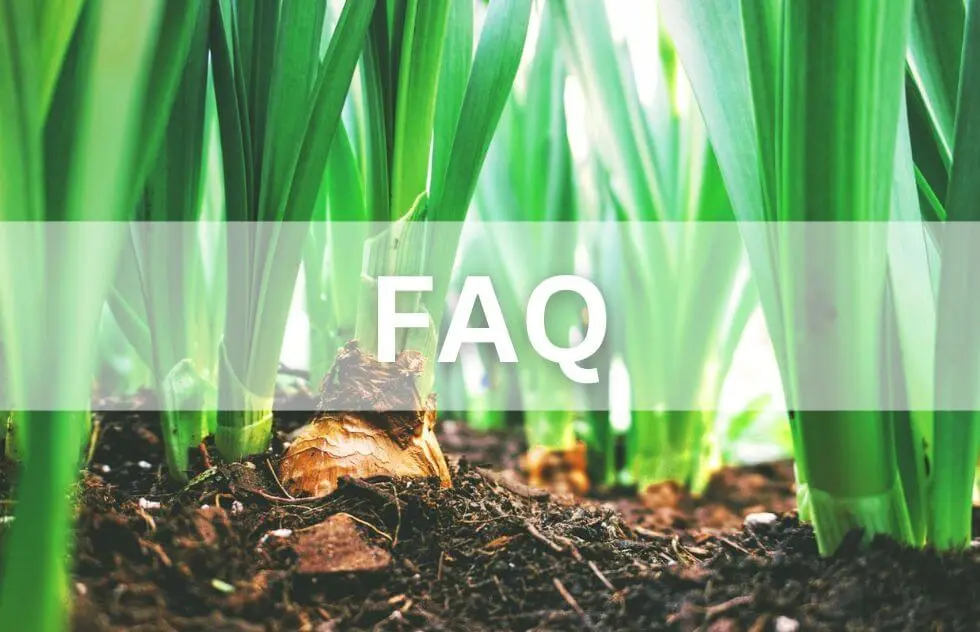
FAQ: Frequently Asked Questions About Urban Agriculture
What are the main benefits of urban agriculture?
It reduces the carbon footprint, improves food security, promotes biodiversity, and strengthens social cohesion.
Is urban agriculture economically viable?
Yes, with the right technologies and business models, it can be profitable, especially in markets with high demand for fresh, local products.
Which cities are pioneers in urban agriculture?
Singapore, New York, Berlin, and Detroit are among the leading cities in urban agriculture.
Can I start urban agriculture at home?
Yes, even with limited space, you can start with a balcony garden or a hydroponic system.
How can I support urban agriculture?
Buy locally produced food, support community projects, or get involved in your neighborhood.
This post is also available in Deutsch.
